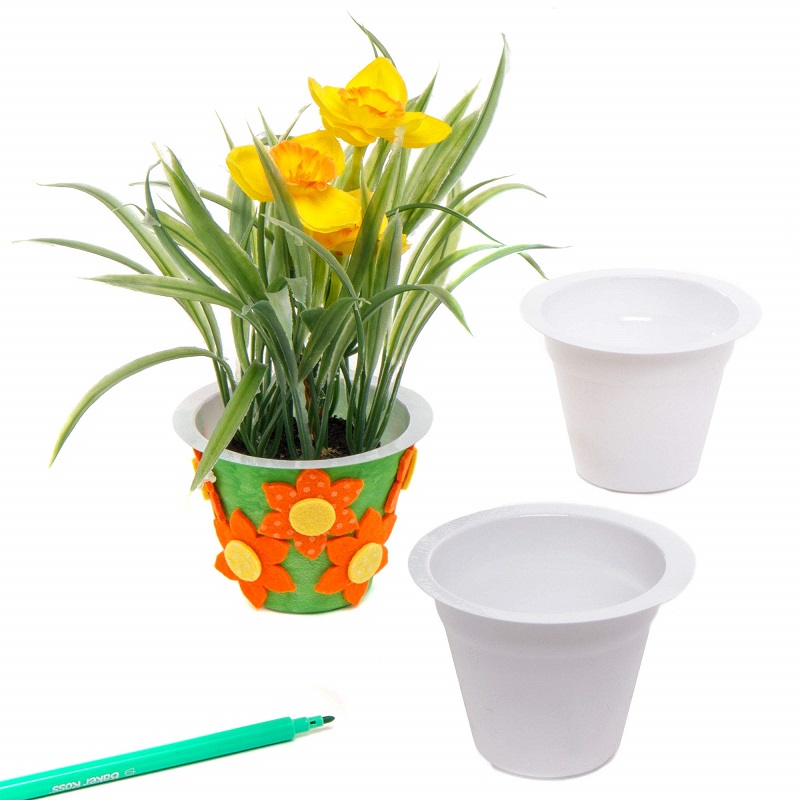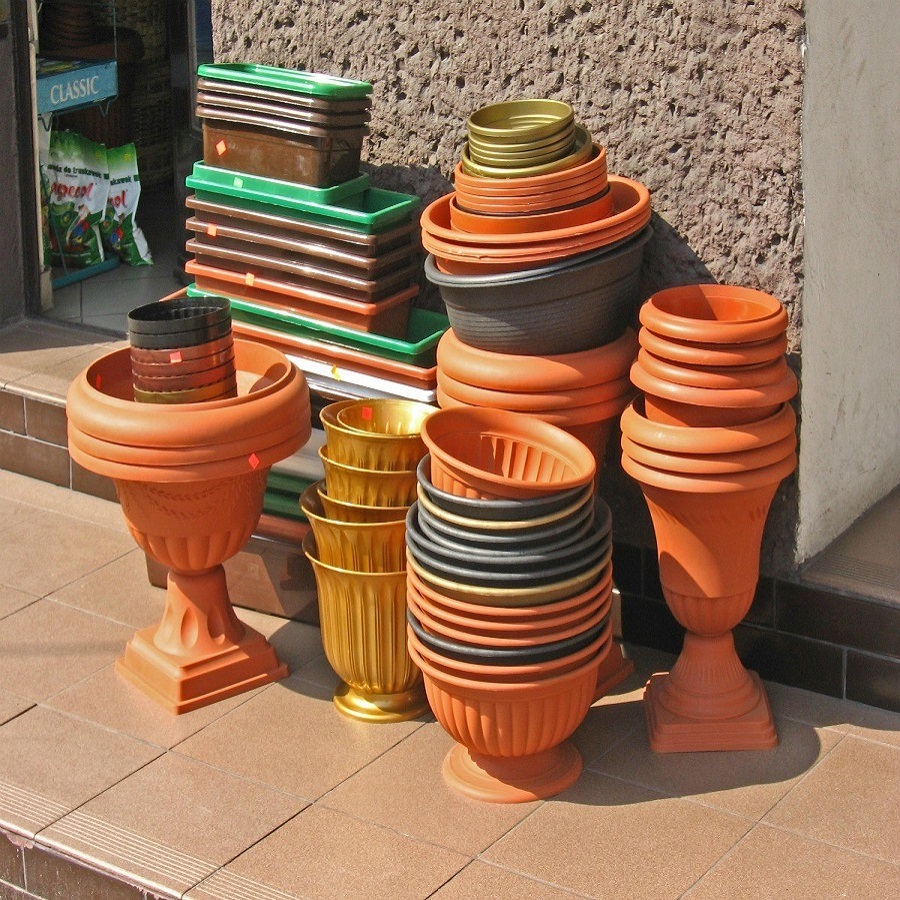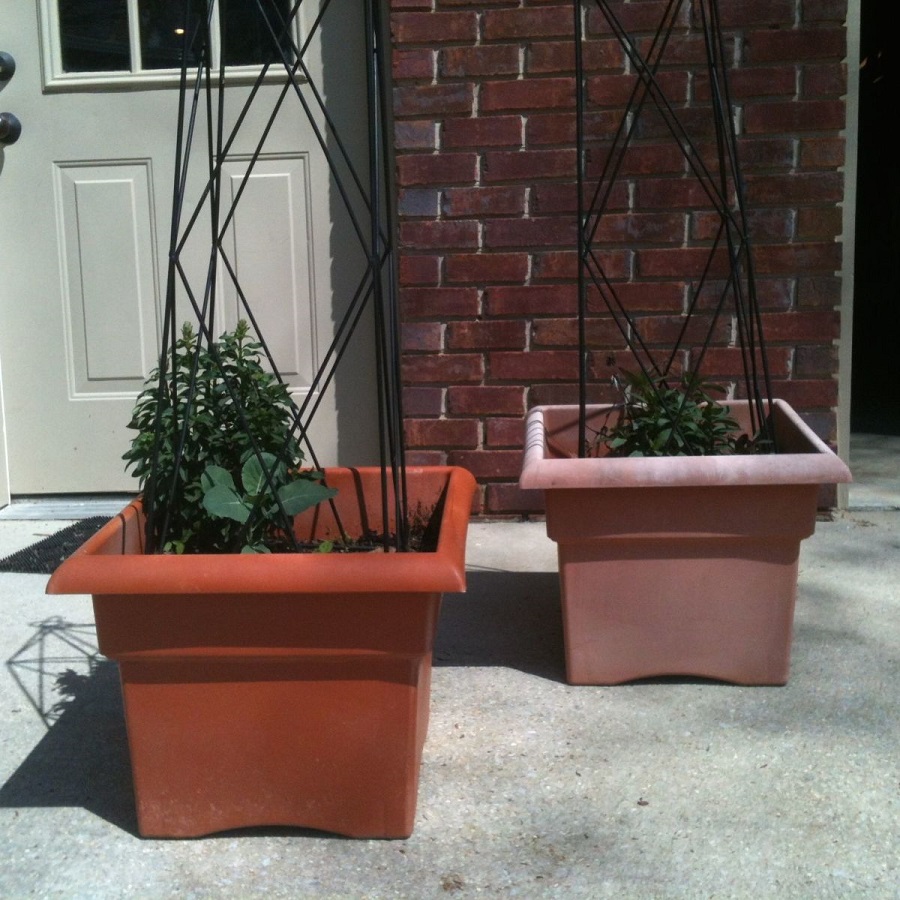Plastic flower pots are a versatile and affordable option for gardening enthusiasts. However, they often lack the aesthetic appeal of ceramic or terracotta pots. Fortunately, painting plastic flower pots can transform them into eye-catching pieces that enhance any garden or indoor space. In this guide, we will explore the best paints for plastic flower pots, considering durability, decorative options, and application techniques.
Understanding the Basics of Painting Plastic Flower Pots
Why Paint Plastic Flower Pots?
Painting plastic flower pots can serve both practical and aesthetic purposes. Aesthetically, it allows gardeners to customize pots to match their décor, create unique patterns, or add vibrant colors to their plant displays. Practically, painting can also help protect the pots from UV rays and weathering, extending their lifespan. Additionally, a well-painted pot can complement the beauty of the plants it holds, turning a simple plastic container into a decorative piece.
Challenges of Painting Plastic
Plastic is a challenging surface for paint due to its smooth and non-porous nature. Many standard paints struggle to adhere properly, leading to peeling and chipping over time. To overcome this, it’s crucial to use paints specifically formulated for plastic or to prepare the surface adequately before painting. This preparation ensures better adhesion and durability, resulting in a long-lasting finish that maintains its appearance.

Types of Paints Suitable for Plastic Flower Pots
Acrylic Paints
Acrylic paints are a popular choice for painting plastic flower pots. They are water-based, which makes them easy to clean up and work with. Acrylic paints offer a wide range of colors and finishes, including matte, satin, and gloss. They adhere well to plastic when used with a primer and provide vibrant, long-lasting color.
Advantages of Acrylic Paints
Acrylic paints are flexible and versatile, making them suitable for detailed designs and various finishes. They dry relatively quickly, which allows for faster project completion. Additionally, acrylic paints are generally resistant to fading and can handle moderate exposure to outdoor elements when sealed with a clear coat.
Disadvantages of Acrylic Paints
One drawback of acrylic paints is their tendency to chip or peel if not applied correctly. They also require a primer to adhere well to plastic surfaces. Without proper sealing, acrylic paint may not withstand extreme weather conditions over time.
Spray Paints
Spray paints designed for plastics are another excellent option for painting plastic flower pots. These paints come in various finishes, including gloss, satin, and matte. Spray paints can provide a smooth, even coat and are ideal for large surfaces or intricate designs.
Advantages of Spray Paints
Spray paints are convenient and efficient, covering large areas quickly and evenly. Many spray paints are formulated with additives that enhance adhesion to plastic surfaces. They also come in a wide range of colors and finishes, allowing for great flexibility in design.
Disadvantages of Spray Paints
The main challenges with spray paints include the need for proper ventilation and protective gear due to the fumes. Additionally, achieving an even coat requires practice and careful application to avoid drips and runs. Some spray paints may require multiple coats to achieve full coverage.
Specialty Paints for Plastic
Specialty paints for plastic, such as those designed for use on garden furniture or automotive parts, offer enhanced adhesion and durability. These paints often contain bonding agents that ensure a strong bond with plastic surfaces.
Advantages of Specialty Paints
Specialty paints are formulated to adhere well to plastic without the need for a primer. They often offer superior durability, resistance to weathering, and longer-lasting color. These paints are ideal for outdoor use and high-traffic areas.
Disadvantages of Specialty Paints
Specialty paints may be more expensive than standard acrylic or spray paints. They may also require specific application techniques or conditions, such as temperature and humidity controls, to achieve the best results.

Preparing Plastic Flower Pots for Painting
Cleaning the Pots
Before painting, it’s essential to clean the plastic flower pots thoroughly. Dirt, grime, and residue can interfere with paint adhesion, leading to unsatisfactory results. Use a mild detergent and water to scrub the pots, then rinse and let them dry completely.
Techniques for Effective Cleaning
Use a soft brush or sponge to clean hard-to-reach areas. For stubborn stains or residue, a mixture of baking soda and water can be effective. Ensure the pots are completely dry before proceeding to the next step to avoid trapping moisture under the paint.
Sanding the Surface
Sanding the plastic surface helps to create a texture that improves paint adhesion. Use fine-grit sandpaper to lightly scuff the surface, focusing on any smooth areas where the paint might struggle to stick. This step is particularly important for ensuring that the paint bonds effectively.
Sanding Tips and Techniques
Sand in a circular motion to create an even texture. Be cautious not to sand too aggressively, as this can damage the plastic. After sanding, wipe the surface with a damp cloth to remove dust and debris before painting.
Applying Primer
Using a primer designed for plastic can significantly enhance paint adhesion and durability. Apply a thin, even coat of primer to the prepared surface and allow it to dry completely before applying the paint.
Benefits of Using a Primer
A primer helps to seal the plastic surface, preventing the paint from soaking in or reacting with the plastic. It also creates a uniform surface for the paint, reducing the risk of streaks and uneven coverage. Primers can also improve the color vibrancy and longevity of the paint job.
Painting Techniques for Plastic Flower Pots
Choosing the Right Brush or Roller
When using acrylic or specialty paints, select the appropriate brush or roller for your project. A high-quality synthetic brush is ideal for detailed work and smaller areas, while a foam roller can cover larger surfaces more quickly and evenly.
Brush and Roller Tips
For detailed designs, use a fine-tipped brush to ensure precision. For larger areas, choose a roller with a smooth nap to avoid texture inconsistencies. Clean brushes and rollers thoroughly after use to maintain their effectiveness for future projects.
Applying the Paint
Apply the paint in thin, even coats to avoid drips and runs. Allow each coat to dry completely before applying additional layers. Depending on the paint type and desired finish, you may need two or more coats to achieve full coverage.
Techniques for Even Application
Start painting from the top of the pot and work your way down to prevent drips from affecting the finished appearance. Use long, smooth strokes for a consistent finish, and avoid overloading your brush or roller with paint.
Sealing the Paint
After the final coat of paint has dried, apply a clear sealer to protect the paint job from weathering and wear. Choose a sealer that is compatible with the type of paint used and is suitable for outdoor use if the pots will be placed outside.
Types of Sealers
Clear acrylic sealers are a common choice for protecting painted surfaces. They provide a glossy or matte finish, depending on your preference. Some sealers also offer UV protection to prevent fading from sun exposure.

Decorative Ideas for Painted Plastic Flower Pots
Creating Custom Designs
Painting allows for endless creative possibilities. Consider designing your pots with patterns, textures, or even personalized messages. Use stencils or masking tape to create geometric patterns, stripes, or polka dots for a unique look.
Tips for Custom Designs
Plan your design in advance and sketch it out on paper before painting. Use painter’s tape to create clean lines and protect areas you want to keep unpainted. Experiment with different techniques and colors to achieve the desired effect.
Using Multi-Colored Paints
Incorporating multiple colors can add depth and interest to your plastic flower pots. Try using a combination of contrasting or complementary colors to create vibrant, eye-catching designs.
Techniques for Multi-Colored Designs
Layering colors can create beautiful effects. Allow each layer to dry completely before applying the next. Use sponge brushes or dry-brushing techniques to blend colors seamlessly or create textured effects.
Maintaining and Caring for Painted Plastic Flower Pots
Cleaning Painted Pots
To maintain the appearance of your painted plastic flower pots, clean them regularly using a mild detergent and water. Avoid abrasive cleaners or scrubbing too hard, as this can damage the paint.
Cleaning Tips
Use a soft cloth or sponge to gently wipe the surface. For stubborn dirt, a solution of water and mild soap can be used. Rinse thoroughly and let the pots dry completely before returning them to use.
Protecting Painted Pots from Weather
If your painted pots are exposed to the elements, take steps to protect them from extreme weather conditions. Store them in a sheltered area during harsh weather or apply additional coats of sealer for extra protection.
